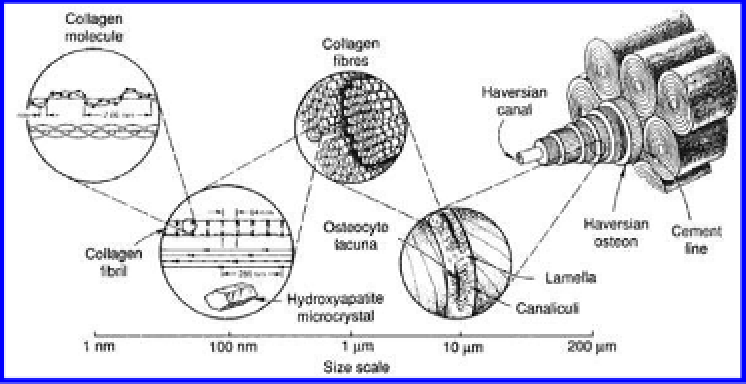Biomedical Engineering Reference
In-Depth Information
bone is made of a network of mostly interconnected plates and rods that
reside within the cortical shell or underneath articular joint surfaces. The
millimeter-sized spaces in between trabeculae house bone marrow and
are much more metabolically active than cortical bone due to their high
surface-to-volume ratio. As such, loading patterns within trabecular bone
are often visible to the naked eye where trabeculae align along lines of
high mechanical loads. It is often the structural integrity of trabecular,
not cortical, bone that is lost in disuse or osteoporosis and results in
vertebral or hip fractures.
Figure 7-1. Hierarchical structure of human compact bone showing organization from the
nanometer scale to the micrometer scale. The bone material is made up of distinct phases:
organic (predominately Type I collagen) and mineral (predominately hydroxyapatite with
additional forms of calcium phosphates). Water, both bound to the organic molecules and
unbound within the interstitial fluid, forms the third constituent phase that acts to
plasticize bone and impart viscoelasticity at the tissue (micrometer) level. (Figure
reprinted with permission from Macmillan Publishers Ltd:
Nature
,
1
copyright 1993.)
1.2.
Bone cells
Bone cells perform the key functions of self-assembly, self-maintenance,
and self-repair. There exists a complex interplay, one that occurs through
both local and systemic communication, between the main types of bone
cells: osteoclasts, osteoblasts, and osteocytes. While many decades of

Search WWH ::

Custom Search